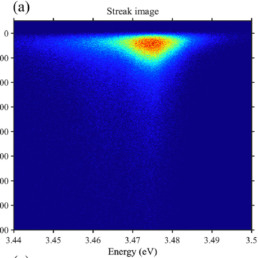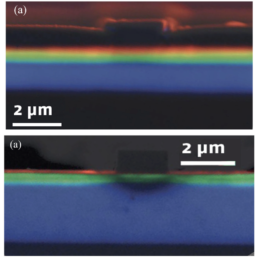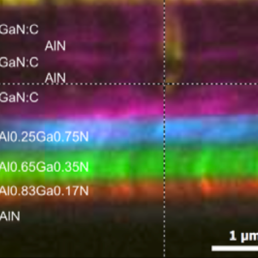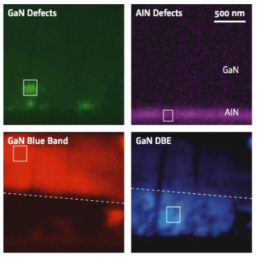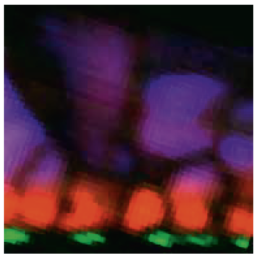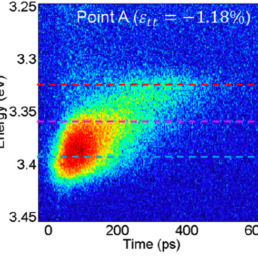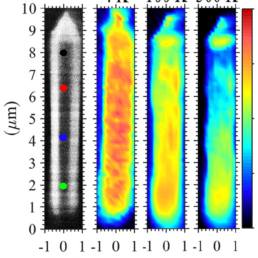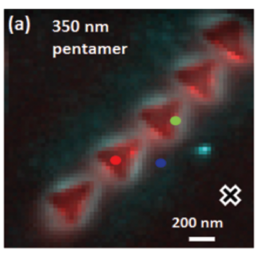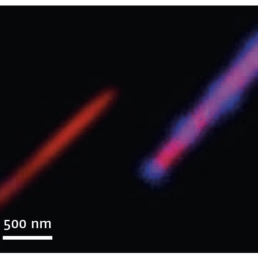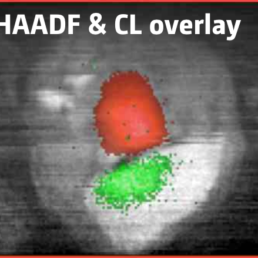Defect Detection and Characterization
Defects locally change the crystal structure. Such changes influence the wavelength and intensity of the cathodoluminescence (CL) signal. This makes CL an appealing method for non-destructive high resolution defect detection and characterization.
Selection of applications:
Composition Metrology
Changes in material composition directly influence the cathodoluminescence emission wavelength and intensity. CL is thus a very convenient way of mapping compositional fluctuations at the nanometer scale.
Selection of applications:
Doping Metrology
Different dopants and doping concentrations in semiconductors change the cathodoluminescence emission. This makes CL a powerful method for doping metrology on a variety of materials such as silicon, gallium nitride compounds and others.
Selection of applications:
Failure Analysis
Cathodoluminescence maps of failed or aged devices often show spectral and intensity changes as compared to a reference device. This makes CL a very useful method to localise and identify failure or ageing mechanisms.
Selection of applications:
Nanostructure Characterization
Cathodoluminescence is an excitation spectroscopy method that can access optical information far below the optical diffraction limit. This makes it an ideal method to assess optical properties of nanostructures and for nanophotonics experiments.
Selection of applications:
Carrier Dynamics (Picosecond Time Resolved CL) & Dynamic SEM
Picosecond time resolved cathodoluminescence (psTRCL) allows measurement of carrier dynamics with picosecond time and nanometer spatial resolutions. Energy transfer processes and variations of radiative and non-radiative lifetimes can be directly measured.
In addition, Attolight’s psTRCL system is a dynamic SEM that allows to carry out advanced pump and probe experiments at the same time.
Selection of applications:
Biological Imaging
Fluorescence imaging is a well established method in biological imaging. Dyes or proteins are used as labels for molecular processes or structures. Electron beam stable labels are being developed that also exhibit well defined cathodoluminescence emission lines.
This makes the identification and imaging of molecular processes at nanometer resolution possible.
Defect Detection and characterization
Defects locally change the crystal structure. Such change influences the wavelength and intensity of the CL signal. This makes CL is an appealing method for non-destructive high resolution defect detection and characterization.
Defect Detection and characterization
Defects locally change the crystal structure. Such change influences the wavelength and intensity of the CL signal. This makes CL is an appealing method for non-destructive high resolution defect detection and characterization.
Defect Detection and characterization
Defects locally change the crystal structure. Such change influences the wavelength and intensity of the CL signal. This makes CL is an appealing method for non-destructive high resolution defect detection and characterization.
Defect Detection and characterization
Defects locally change the crystal structure. Such change influences the wavelength and intensity of the CL signal. This makes CL is an appealing method for non-destructive high resolution defect detection and characterization.
Defect Detection and characterization
Defects locally change the crystal structure. Such change influences the wavelength and intensity of the CL signal. This makes CL is an appealing method for non-destructive high resolution defect detection and characterization.
Defect Detection and characterization
Defects locally change the crystal structure. Such change influences the wavelength and intensity of the CL signal. This makes CL is an appealing method for non-destructive high resolution defect detection and characterization.
Defect Detection and characterization
Defects locally change the crystal structure. Such change influences the wavelength and intensity of the CL signal. This makes CL is an appealing method for non-destructive high resolution defect detection and characterization.
Defect Detection and characterization
Defects locally change the crystal structure. Such change influences the wavelength and intensity of the CL signal. This makes CL is an appealing method for non-destructive high resolution defect detection and characterization.

